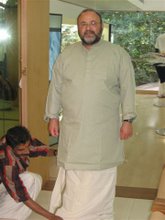Going Dutch: everyday I pass a sign that reads: "Hartford. 1633 Dutch Fort." Hey, wait a minute! I don't remember hearing back in grade school that the Dutch explored Connecticut before the arrival of English settlers. Or that they came to trade for furs with the Pequots and Mohegans. Of course we were told that Henry Hudson sailed for the Dutch, and that Manhattan Island was purchased for the equivalent of a jar of glass beads, but as a child what I got out of that story was 1) the Dutch were very cunning!, and 2) the Indians were very stupid! Well, of course the Indians weren't stupid, they didn't "buy" anything as far as they were concerned, and they aren't "Indians" either. But that was American history as taught circa 1958. They told me my forefathers were Pilgrims, so the only way I could explain my grandparents' Yiddish accents was by concluding that people started talking strangely when they grew old. Anyway I have started thinking about that sign. OK, so the Dutch impact in the New World ultimately wasn't so great, but worldwide, the rise and expansion of their East and West India Companies was a major factor in the emergence of the modern world system. SO --- back to the oil paintings of the Dutch 17th century "Golden Age." There's more worldwide webs of stuff in them, besides the beaver hats! And they're not exactly trivia, either, when you think about the course of world history: sugar, pepper, porcelain, tobacco, "Oriental" carpets, even the pigments for some of the paints were exotic (lapis lazuli, Indian yellow from cow urine, Indian indigo) or of New World origin (cochineal). My conclusion? We are what we eat, we are what we wear, but we are not just what we think we are when we present ourselves to ourselves and to others. We are from all over the place. We are all of us. But each of us still has to pay their own way.
Friday, August 17, 2007
Subscribe to:
Comments (Atom)



